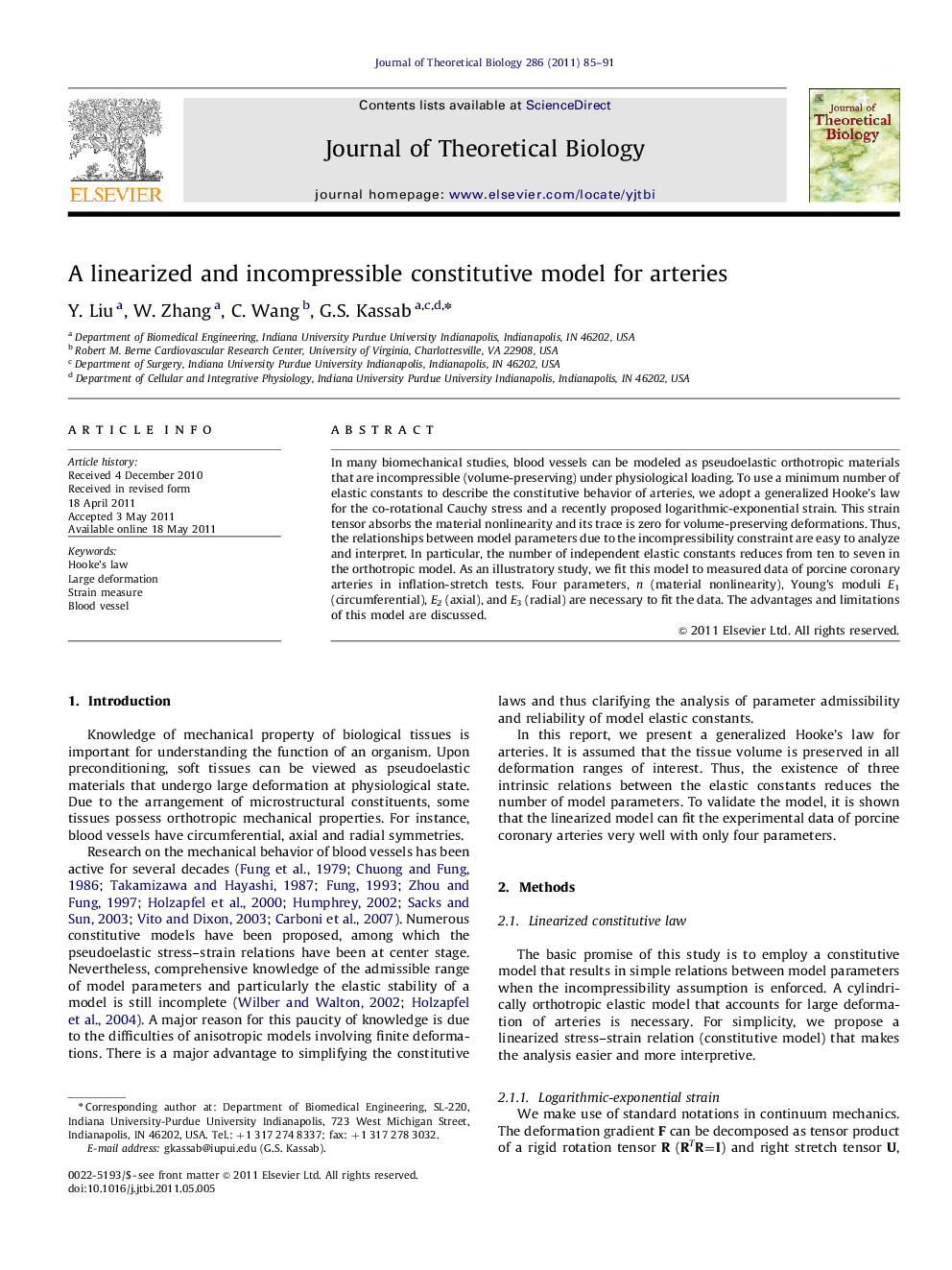| Article ID | Journal | Published Year | Pages | File Type |
|---|---|---|---|---|
| 4496973 | Journal of Theoretical Biology | 2011 | 7 Pages |
In many biomechanical studies, blood vessels can be modeled as pseudoelastic orthotropic materials that are incompressible (volume-preserving) under physiological loading. To use a minimum number of elastic constants to describe the constitutive behavior of arteries, we adopt a generalized Hooke's law for the co-rotational Cauchy stress and a recently proposed logarithmic-exponential strain. This strain tensor absorbs the material nonlinearity and its trace is zero for volume-preserving deformations. Thus, the relationships between model parameters due to the incompressibility constraint are easy to analyze and interpret. In particular, the number of independent elastic constants reduces from ten to seven in the orthotropic model. As an illustratory study, we fit this model to measured data of porcine coronary arteries in inflation-stretch tests. Four parameters, n (material nonlinearity), Young's moduli E1 (circumferential), E2 (axial), and E3 (radial) are necessary to fit the data. The advantages and limitations of this model are discussed.
► A generalized Hooke's stress–strain model has been developed for vessel wall. ► The co-rotational Cauchy stress and log-exponential strain shows linear relationship. ► The model requires fewer material parameters than Fung's model for vessels. ► The model fits triaxial test data of porcine coronary arteries with four parameters.
